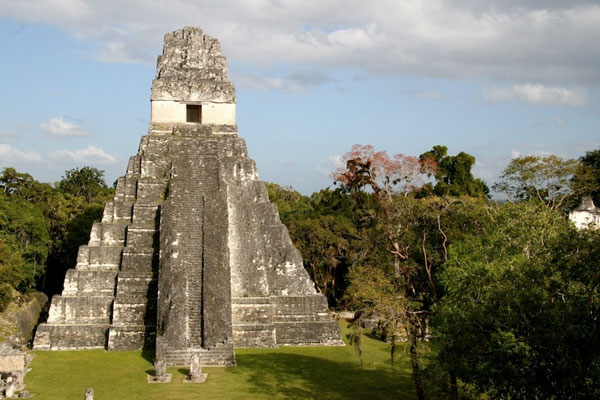The answer to the development of the ancient Maya empire
In the country of Guatemala today, every year, the entire Tikal city area of the ancient Mayan people suffered from droughts, without a single drop of rain within 4 months. However, it is still known as a busy city, the center of the most advanced civilization in the Americas, reaching a very high level in many fields, with a number of people sometimes up. to 80,000 people in 700 AD.
This contradiction is a topic that challenges the scientific community for a long time and will probably end in the near future because recently, experts have found the answer lies in the system of supplying extremely water Especially never known.
The demand for water of Tikal city is always fully met thanks to a series of reservoirs and a very scientifically-arranged pathway system that helps store water from the rainy season for 8 months and 'save' to the drought months later, the team said in the Proceedings magazine of the National Academy of Sciences. 'Residents can use land and water resources sustainably for about 1500 years without interruption' , Vernon Scarborough, anthropologist at the University of Cincinnati.

Famous temple of ancient Mayan in Tikal.
Scarborough and his colleagues have excavated many reservoirs, ditches, and canals that carry water from the top of the Tikal hills and mountains to the residential area. This is considered one of the early advances in technology especially interesting because it appeared in ancient times.
People began to appear in Tikal from 500 BC and peaked around 700 to 900 AD. The life of the first group of residents depends on natural streams. As the population increased, the amount of water became scarce, not enough to meet demand. Thus, the Tikal extended the canals, natural creeks and prevented water from seeping into the ground by transferring large rocks often to build houses or temples into reservoirs. This series of reservoirs can store thousands of liters of rainwater, even 74,631 cubic meters.
In order to take advantage of the natural filtering process of soil and sand, the Mayans built a water distribution system from existing sources of rivers and streams rather than filling them up, forcing the flow to pass through many layers of sand, thereby leading to garbage. the debris is retained.
Although in the end, the ancient Mayan civilization still collapsed due to population pressure and increasing drought levels, but the above-mentioned ways of doing science are worth studying for modern people today. . In the context of energy scarcity, simple, environmentally friendly solutions should be given top priority, Scarborough said.
Reference: Livescience
- Behind the fall of the Maya empire
- Architectural masterpieces of Maya civilization
- May Maya civilization collapse due to deforestation?
- Mayan civilization may have been destroyed by drought
- Discover the oldest tomb of the Maya period
- Explore ancient Mayan residences
- Discovered the ancient Maya prince tomb
- Snake King's mystery, supreme warrior and dream of mighty Mayan empire
- Discover the mysteries of the ancient tomb of Maya
- The 1,400-year-old stone tablet reveals a spooky Mayan truth
- The mysterious 'monster' dies with the girl in Maya's tomb
- Discovered two ancient tombs in Maya civilization in Guatemala
 'Fine laughs' - Scary and painful torture in ancient times
'Fine laughs' - Scary and painful torture in ancient times The sequence of numbers 142857 of the Egyptian pyramids is known as the strangest number in the world - Why?
The sequence of numbers 142857 of the Egyptian pyramids is known as the strangest number in the world - Why? History of the iron
History of the iron What is alum?
What is alum?